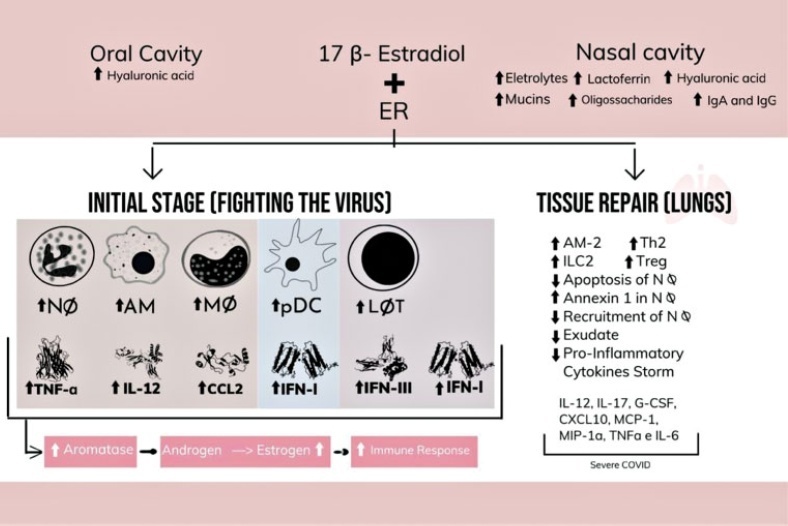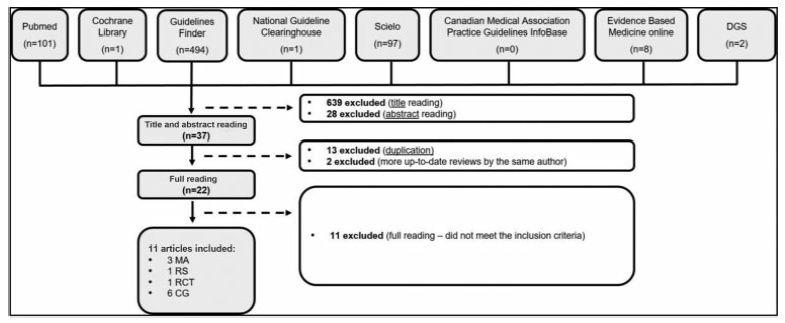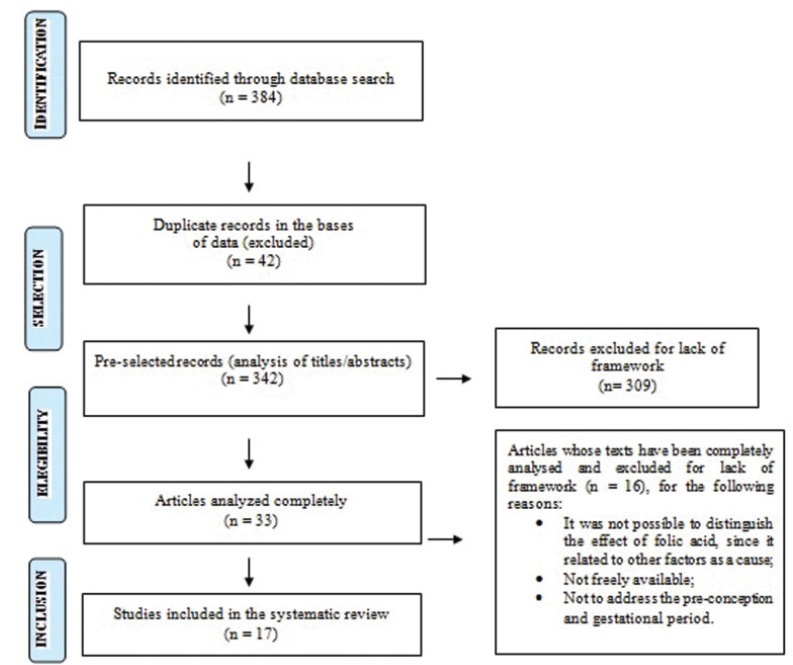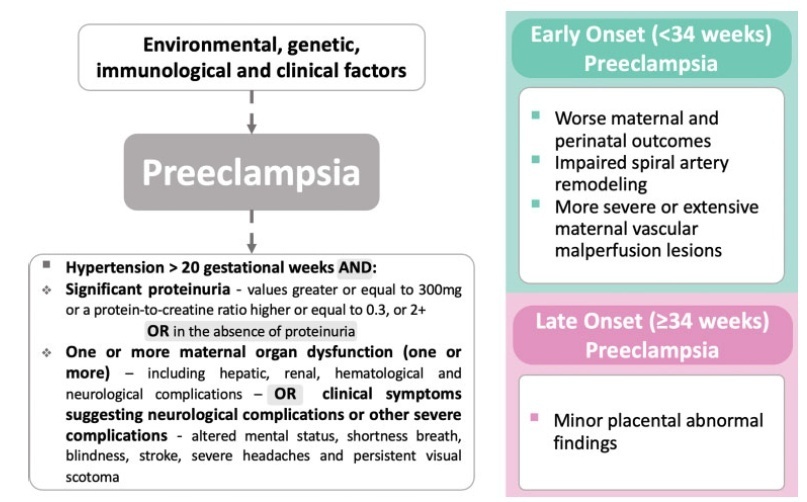Summary
Revista Brasileira de Ginecologia e Obstetrícia. 2021;43(12):940-948
Women have metabolic, immunological, and genetic variables that ensure more protection from coronavirus infection. However, the indication of treatment for several pathologies and contraception is determined by hormones that have adverse effects and raise doubts about their use during the COVID-19 pandemic. Therefore, the present study searches women specificities and the relation between female sexual hormones and COVID-19, and reports the main recommendations in this background. To this end, a review of the literature was conducted in the main databases, auxiliary data sources, and official websites. Therefore, considering the hypercoagulability status of COVID-19, the debate about the use of contraceptives due to the relative risk of thromboembolic effects that they impose arises. However, the current available evidence, as well as the recommendations of main health organs around the world, demonstrate that the use of hormonal contraceptives must be maintained during the pandemic.

Summary
Revista Brasileira de Ginecologia e Obstetrícia. 2021;43(11):870-877
To determine the association between maternal mobile phone use and adverse outcomes in infants, children, and mothers.
In March 202, we conducted a search on the MEDLINE, Embase, and Scopus databases. Data extraction and an assessment of the quality of the studies were performed by two authors. The quality of the studies was assessed using the checklist of the Newcastle-Ottawa scale.
Studies assessing behavioral problems in infants aged 6 to 18 months reported null findings. However, an increased risk of emotional and behavioral disorders was observed in children aged between 7 and 11 years whose mothers had been exposed to cell phones. The findings regarding the association between maternal cell phone exposure and adverse outcomes in children aged 3 to 5 are controversial. A study found a significant association between the call time (p=0.002) or the history of mobile phone use (in months) and speech disorders in the children (p=0.003). However, another study found that maternal cell phone use during pregnancy was not significantly associated with child psychomotor and mental developments. Inconclusive results were observed about the adverse outcomes in fetuses, such as fetal growth restriction or t scores for birth weight in cell phone users as opposed to non-users. On the contrary, the children ofmothers who were cell phone users had a lower risk of scoring low on motor skills. Similar results were observed regarding the adverse outcomes of cell phone use in infants, such as fetal growth restriction or low birth weight, and the risk of preeclampsia was lower among subjects with medium and high cell phone exposure, as opposed to those with low exposure.
Studies on behavioral problems have reported different postnatal results, such as null findings among infants and a positive association in children.
Summary
Revista Brasileira de Ginecologia e Obstetrícia. 2021;43(11):862-869
The puerperium is a complex period that begins with placental delivery and lasts for 6 weeks, during which readaptation of the female organism and redistribution of blood volume occur. This period is conducive to the occurrence of thromboembolic events. In the context of the SARS-CoV-2 pandemic, the virus responsible for COVID-19, the attention of the scientific community and health professionals has been focused on obtaining insights on different aspects of this disease, including etiology, transmission, diagnosis, and treatment. Regarding the pregnancy-postpartum cycle, it is opportune to review the clinical conditions that can occur during this period and to investigate dyspnea as a postpartum symptom in order to avoid its immediate association with COVID-19 without further investigation, which can lead to overlooking the diagnosis of other important and occasionally fatal conditions.
Summary
Revista Brasileira de Ginecologia e Obstetrícia. 2021;43(10):782-788
To review the evidence about universal iron supplementation in pregnancy to prevent maternal anemia.
Bibliographic research of randomized and controlled clinical trials, meta-analyses, systematic reviews, and clinical guidelines, published between August 2009 and August 2019, using the MeSH terms: iron; therapeutic use; pregnancy; anemia, prevention and control.
We included six clinical guidelines, three meta-analyses and one randomized controlled clinical trial.
Most articles point to the improvement of hematological parameters and reduction of maternal anemia risk, with supplementary iron. However, they do not correlate this improvement in pregnant women without previous anemia with the eventual improvement of clinical parameters.
Universal iron supplementation in pregnancy is controversial, so we attribute a SORT C recommendation strength.

Summary
Revista Brasileira de Ginecologia e Obstetrícia. 2021;43(10):775-781
To analyze the scientific production regarding maternal folic acid (FA) supplementation and its relationship with autistic spectrum disorder (ASD).
We performed unrestricted electronic searches in the BIREME virtual bank, Virtual Health Library (VHL) and Medical Literature Analysis and Retrieval System Online (MEDLINE/PubMed) databases.
For sample selection, articles that met the proposed objectives were included, published in English, Spanish and Portuguese, the use of Health Sciences Descriptors (DeCS): autistic OR autism AND autism spectrum disorder AND folic acid, AND, with the use of the Medical Subject Headings (MeSH): autistic OR autism AND autistic spectrum disorder AND folic acid.
Data extraction was performed by the reviewers with a preestablished data collection formulary.
The Preferred Reporting Items for Systematic Review and Meta-Analysis Protocols (PRISMA-P) was used based on a checklist with 27 items and a 4-step flowchart.
A total of 384 articles was found by the search strategies, of which 17 were eligible following the pre-established criteria. The main findings of the present review point to maternal FA supplementation in the pre-conception period and beginning of pregnancy as a protective effect in relation to ASD, which should be indicated in this period as prevention to the problem.
According to the research analyzed, more studies are necessary to know its effects on pregnancy, since the consumption of excessive FA may not be innocuous.

Summary
Revista Brasileira de Ginecologia e Obstetrícia. 2021;43(8):627-637
To compare the effects of expectant versus interventionist care in the management of pregnant women with severe preeclampsia remote from term.
An electronic search was conducted in the Medical Literature Analysis and Retrieval System Online (MEDLINE), Excerpta Medica Database (EMBASE), Cochrane Central Register of Controlled Trials (CENTRAL), Latin American and Caribbean Health Sciences Literature (LILACS, for its Spanish acronym), World Health Organization’s International Clinical Trials Registry Platform (WHO-ICTRP), and Open- Grey databases. The International Federation of Gynecology and Obstetrics (FIGO, for its French acronym), Royal College of Obstetricians and Gynaecologists (RCOG), American College of Obstetricians and Gynecologists (ACOG), and Colombian Journal of Obstetrics and Gynecology (CJOG) websites were searched for conference proceedings, without language restrictions, up to March 25, 2020.
Randomized clinical trials (RCTs), and non-randomized controlled studies (NRSs) were included. The Grading of Recommendations, Assessment, Development and Evaluation (GRADE) approach was used to evaluate the quality of the evidence.
Studies were independently assessed for inclusion criteria, data extraction, and risk of bias. Disagreements were resolved by consensus.
Four RCTs and six NRS were included. Low-quality evidence from the RCTs showed that expectant care may result in a lower incidence of appearance, pulse, grimace, activity, and respiration (Apgar) scores<7 at 5 minutes (risk ratio [RR]: 0.48; 95% confidence interval [95%CI]: 0.23%to 0.99) and a higher average birth weight (mean difference [MD]: 254.7 g; 95%CI: 98.5 g to 410.9 g). Very low quality evidence from the NRSs suggested that expectant care might decrease the rates of neonatal death (RR: 0.42; 95%CI 0.22 to 0.80), hyalinemembrane disease (RR: 0.59; 95%CI: 0.40 to 0.87), and admission to neonatal care (RR: 0.73; 95%CI: 0.54 to 0.99). Nomaternal or fetal differences were found for other perinatal outcomes.
Compared with interventionist management, expectant care may improve neonatal outcomes without increasing maternal morbidity and mortality.

Summary
Revista Brasileira de Ginecologia e Obstetrícia. 2021;43(7):560-569
Preeclampsia (PE) is a pregnancy complication associated with increased maternal and perinatal morbidity and mortality. The disease presents with recent onset hypertension (after 20 weeks of gestation) and proteinuria, and can progress to multiple organ dysfunction, with worse outcomes among early onset preeclampsia (EOP) cases (<34 weeks). The placenta is considered the root cause of PE; it represents the interface between the mother and the fetus, and acts as a macromembrane between the two circulations, due to its villous and vascular structures. Therefore, in pathological conditions, macroscopic and microscopic evaluation can provide clinically useful information that can confirm diagnosis and enlighten about outcomes and future therapeutic benefit.
To perform an integrative review of the literature on pathological placental findings associated to preeclampsia (comparing EOP and late onset preeclampsia [LOP]) and its impacts on clinical manifestations.
Cases of EOP presented worse maternal and perinatal outcomes, and pathophysiological and anatomopathological findings were different between EOP and LOP placentas, with less placental perfusion, greater placental pathological changes with less villous volume (villous hypoplasia), greater amount of trophoblastic debris, syncytial nodules, microcalcification, villous infarcts, decidual arteriolopathy in EOP placentas when compared with LOP placentas. Clinically, the use of low doses of aspirin has been shown to be effective in preventing PE, as well asmagnesium sulfate in preventing seizures in cases of severe features.
The anatomopathological characteristics between EOP and LOP are significantly different, with large morphological changes in cases of EOP, such as
